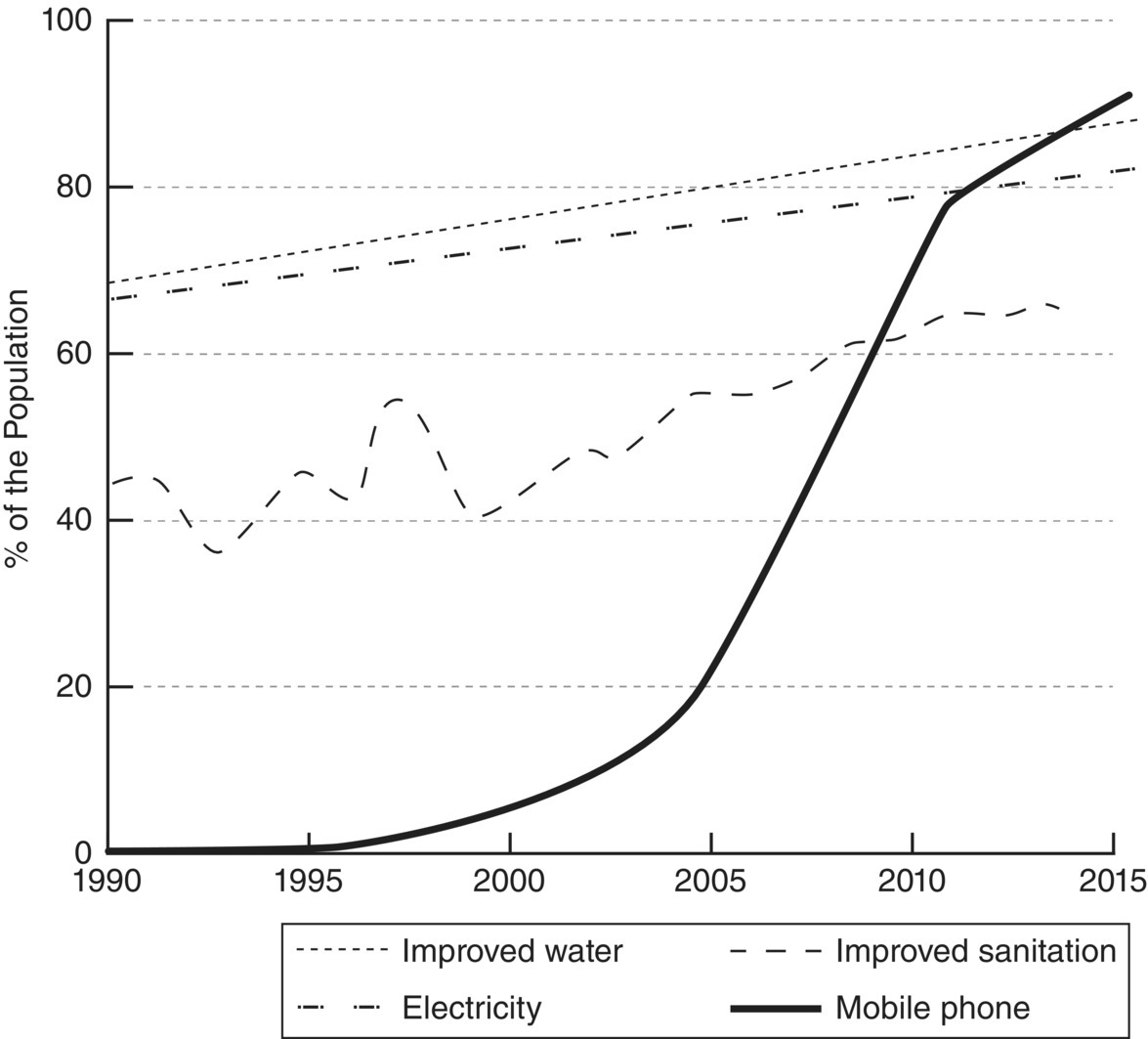Chapter EightGrowth
Over the past 20 years the world has made slow but steady progress in expanding access to crucial services, such as clean water, electricity, and sanitation. Yet despite hundreds of nonprofits, social enterprises, companies, and governments each doing their bit, on average access to these vital services has grown by less than 1% of the global population each year (see Figure 8.1). As of 2015, this has left over 700 million people without clean water, one billion without reliable power, and two billion without proper sanitation.

Figure 8.1 Accelerating the pace of progress.
Source: World Bank, World Development Report 2016: Digital Dividends (Washington, DC: World Bank, 2016), http://www.worldbank.org/en/publication/wdr2016.
In contrast, adoption of mobile phones has skyrocketed around the globe (Figure 8.1). Despite the challenges of reaching poor communities, growth has resembled that of the classic hockey stick graph. In my travels, I’ve seen a Maasai warrior herding cattle in a remote village in East Africa with a mobile phone strapped to his belt and a smallholder farmer in rural Indonesia fish a phone out of her pocket. Today, far more households have access to a mobile phone than a toilet.
The story of mobile phone adoption shows that massive scale is possible, even in the most challenging contexts. How could we achieve this kind of growth trajectory ...
Get Lean Impact now with the O’Reilly learning platform.
O’Reilly members experience books, live events, courses curated by job role, and more from O’Reilly and nearly 200 top publishers.

